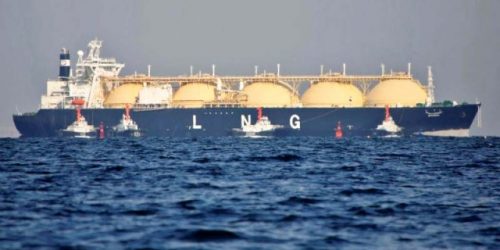Islamabad — Pakistan has cut regasified LNG prices for the country’s two fertilizer producing plants that depend on LNG imports for feedstock, in line with low crude oil prices and to meet fertilizer demand growth in the next few months.
The government lowered regasified LNG prices for fertilizer companies by 17% to Pakistan Rupees 756/MMBtu ($4.56) from Rupees 913/MMBtu. The price cut brings it closer to the roughly $4.50/MMBtu for term LNG imports into Pakistan, assuming 11% of Brent crude prices.
The Oil and Gas Regulatory Authority, the government price regulator, already cut overall regasified LNG prices in Pakistan by $1.4/MMBtu to $6.1-6.3/MMBtu for June 2020.
The price cut will help boost LNG demand and make LNG more competitive in the domestic market, as Pakistan has been tied to contracted oil-linked LNG cargoes that prevent it from taking full advantage of low spot LNG prices.
The feedstock gas will be supplied by distributor Sui Northern Gas to Agritec Ltd. and Fatima Fertilizer, a government official said on July 8. While these two plants are dependent on LNG feedstock, the remaining four fertilizer plants in Pakistan have access to domestic natural gas at lower prices.
Agritec and Fatima Fertilizer get regasified LNG supply for only three to four months and remain closed for the rest of the year as the government prioritizes LNG supply to power companies to avert electricity shortages, fuel stations for vehicles and industries like textiles.
The main aim to reduce regasified LNG prices has been to lower circular debt levels and give fiscal space to gas companies burdened by high receivables, Shankar Talerja, senior oil analyst at Karachi-based brokerage Topline Securities, said.
Pakistan suffers from an acute problem of circular debt where changes in fuel import prices are not passed down the supply chain, and unpaid oil, gas and LNG bills have added up to debt of around Rupees 1700 billion ($10.2 billion) from Rupees 1200 billion ($7.2 billion) in two years.
The government has allocated a fixed rate of $6.5/MMBtu for RLNG supply to the textile sector compared with a 12-month average rate of $10.1/MMbtu, of which the differential is borne by the government.
Talerja said Pakistan’s LNG import price is based on the three-month average crude price and the recent price drop will help ease cash flows between gas distributors and consumers.
Meanwhile, fertilizer stocks have been falling.
The national inventory for urea will drop below the buffer stock level of 200,000 tons in December 2020 to February 2021, according to the National Fertilizer Development Centre.
Urea production stood around 5.5 million mt/year against demand of 5.8 million mt, as fertilizer plants didn’t have access to gas, forcing the government to import fertilizers to plug the deficit.
Natural gas accounts for nearly 50% of Pakistan’s energy mix, higher than many regional counterparts but its domestic production has been declining due to mature assets.
Meanwhile, fertilizer stocks have been falling.
The national inventory for urea will drop below the buffer stock level of 200,000 tons in December 2020 to February 2021, according to the National Fertilizer Development Centre.
Urea production stood around 5.5 million mt/year against demand of 5.8 million mt, as fertilizer plants didn’t have access to gas, forcing the government to import fertilizers to plug the deficit.
Natural gas accounts for nearly 50% of Pakistan’s energy mix, higher than many regional counterparts but its domestic production has been declining due to mature assets.
The fertilizer sector uses around 20% of its overall natural gas demand while the power sector consumes around 33%, according to industry data.
The fertilizer sector uses around 20% of its overall natural gas demand while the power sector consumes around 33%, according to industry data.






